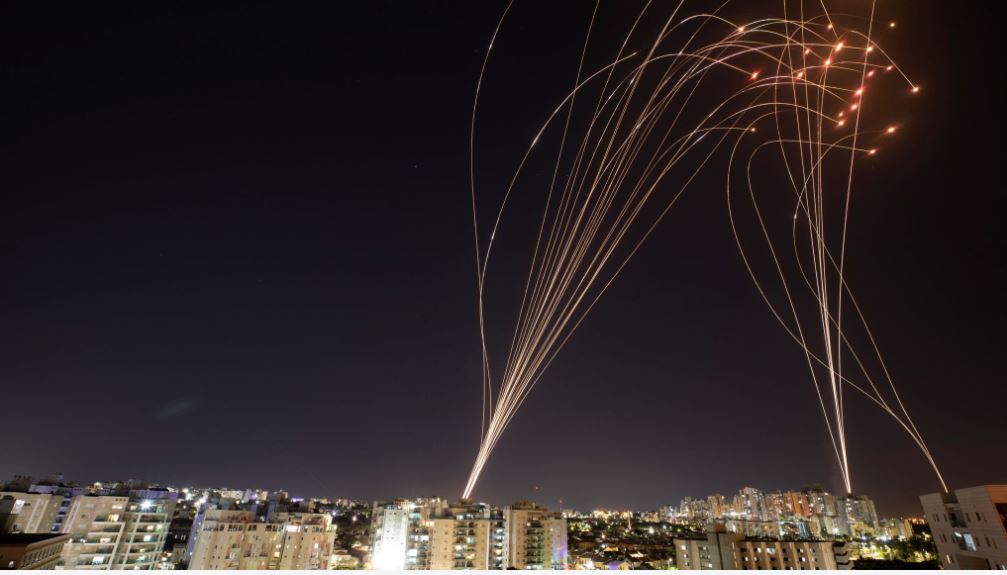
“Last night, Iran fired over 300 ballistic missiles, UAVs, and cruise missiles towards Israel,” Hagari said.
The attack, according to Iran’s Revolutionary Guards, was a retaliation for a deadly April 1 drone strike on its Damascus consulate, confirming early Sunday that a drone and missile attack were underway against Israel.
“In response to the numerous crimes committed by the Zionist regime, including the attack on the consular section… the Islamic Revolutionary Guard Corps fired dozens of missiles and drones at specific targets inside the occupied territories (Israel),” state television quoted a Guards statement as saying.
The Israeli military, in a statement, said that “dozens of surface-to-surface missile launches” were identified, with the majority intercepted before crossing into Israeli territory.
It noted that a seven-year-old girl from a Bedouin community near the southern town of Arad was part of the injured people, and is in intensive care, according to the medical centre that received her.
The attack has been condemned by “western powers.” including Israel’s top ally, the United States; Britain and France, amongst others.
However, AP reports on Sunday that “an incoming attack by more than 300 Iranian drones and ballistic missiles was the latest challenge to Israel’s air defence system, which already has been working overtime to cope with incoming rocket, drone and missile attacks throughout the six-month war against Hamas.”
In this piece, PUNCH Online highlights some key features of the Israeli multilayered Ballistic Missile Defence system:
Iron Dome: This system was developed in 2011 by Israel’s state-owned Rafael Advanced Defence Systems with support from the US, Sky News reports on Sunday.
The Iron Dome consists of a series of truck-towed mobile units placed strategically throughout the country and specialised in shooting down short-range rockets.
The system, which is manned 24 hours, reacts within seconds and uses radars to detect and intercept short-range rockets, missiles and drones.
The report noted that “when their radars detect a threat, the information is sent to a ‘battle management centre’ where military personnel analyse it, anticipating its path and impact point, and decide which missile launcher to use to intercept it.
“Counter missiles are then fired directly at the threat – or near it – so the shrapnel can neutralise it.”
Findings by PUNCH Online revealed that the US has provided financial assistance of $2,915.281 billion to Israel for its Iron Dome system, according to the Missile Defence Advocacy Alliance – a non-for-profit US-based organisation “advocating for the development and deployment of missile defence systems to defend the United States, its armed forces and its allies against missile threats.”
David’s Sling: This defence system, also developed with support from the US, is used to intercept medium-range missiles.
The Arrow: As part of the multilayered air defence system, this component is designed to intercept long-range missiles. The Arrow has been reportedly used to stop long-range missiles by Houthi militants in Yemen, AP reports.
The Patriot: This is the oldest component of the Israeli air defence system. This component was first used during the First Gulf War in 1991 to intercept Scud missiles fired by the late Iraqi leader, Saddam Hussein, Euronews reports Sunday.
Euronews quoted the Centre for Strategic and International Studies (CSIS) which estimated that “each Patriot battery costs about $1.1 billion (€1 billion): $400 million (€375 million) for the system, $690 million (€647 million) for the missiles – the cost of a single missile is estimated at $4.1 million (€3.8 million).”
Patriots are mainly used to shoot down aircraft, including drones.












